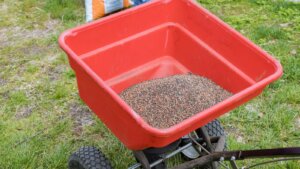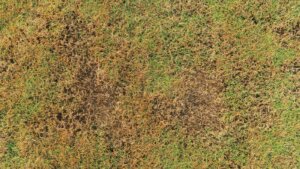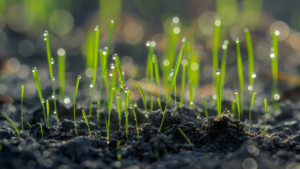One of the best ways to maintain a lush, green landscape is to aerate your lawn. Proper aeration can help improve soil health and promote better growth for your grass.
However, knowing when to aerate your lawn can be confusing. And failing to do it correctly can cause more harm than good. In this guide, we’ll help you understand the signs of soil compaction, the benefits of aeration, and when to do it to ensure a healthy and thriving lawn.
Does Your Lawn Need Aeration?
Aeration is a crucial step in maintaining a healthy lawn because, over time, the soil under your lawn can become compact and dense. Compacted soil can lead to poor drainage and increased susceptibility to disease and pests.
Lawn aeration can help alleviate the negative impacts of compaction. This process involves creating small holes in the soil to allow air, water, and nutrients to penetrate deep into the root zone of the grass.
What are the Signs of Soil Compaction on Your Lawn?
It’s time to consider aeration if your lawn has the following indicators and signs of compaction.
- Areas that receive heavy foot traffic or frequently used for outdoor activities
- A layer of thatch (dead grass) covering the soil that prevents air, water, and nutrients from penetrating the soil
- Patchy or brown appearance, even after watering and fertilizing
- Significant ponding or runoff after watering or rainfall
Why Is It a Good Idea to Aerate Your Lawn?
Regularly aerating your lawn promotes the following benefits for your grass and soil health, resulting in a lush and vibrant lawn.
- Better root development
- Improved nutrient and water uptake
- Enhanced air circulation
- Reduced soil compaction
- Increased resilience to drought.
When Should You Aerate Your Lawn?
The right time to aerate your lawn is at the grass’ peak growing period. If you live in the northern regions with cool-season turfgrasses, it’s best to aerate in early spring or early fall. On the other hand, warm-season grasses in the southern regions are best aerated during late spring to early summer.
When Should You Not Aerate Your Lawn?
It helps to know when should you aerate and seed your lawn, and when should you put it off.
As much as aeration benefits your lawn, you should avoid aerating your lawn in the following circumstances.
- Aerating when the soil is extremely dry, frozen, or waterlogged can damage the grass beyond recovery.
- After overseeding, aerating can disturb the developing grass, causing it to die off or grow weak. Hold off until the new grass has grown to a reasonable height.
- After applying fertilizer, wait a few weeks for it to settle in the soil and work its magic before aerating your lawn.
Learn about Terra’s Aeration Process
Trust the experienced professionals at Terra Lawn Care Specialists with your lawn aeration project. Our unique lawn aeration process can help you achieve a lush, green landscape! Get started today with an expert assessment of your grass conditions. Give us a call at 610-275-2170 or contact us online for a free estimate.



